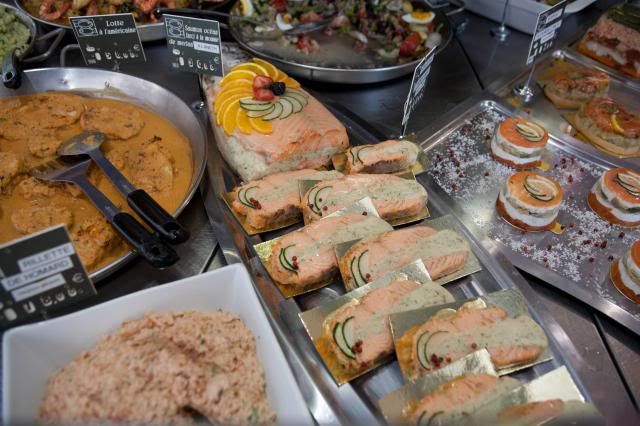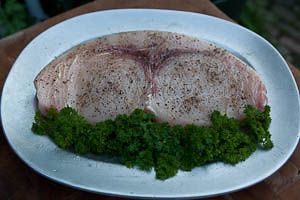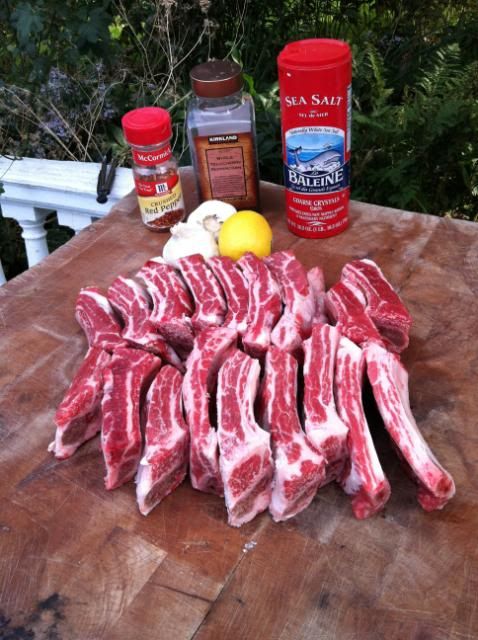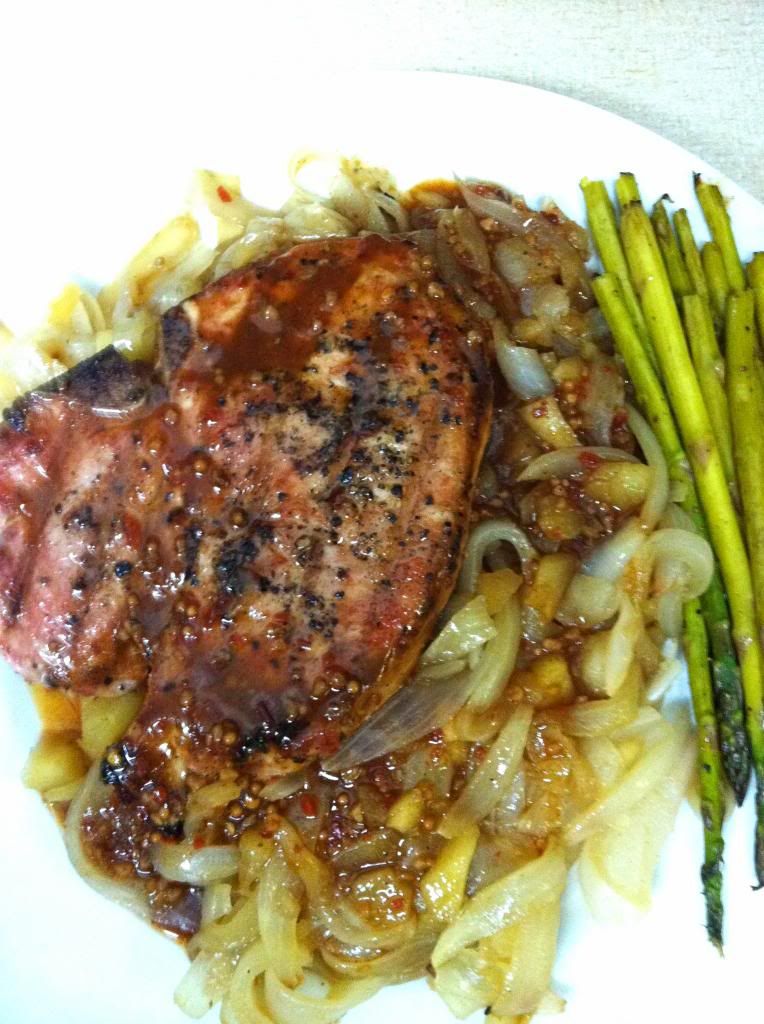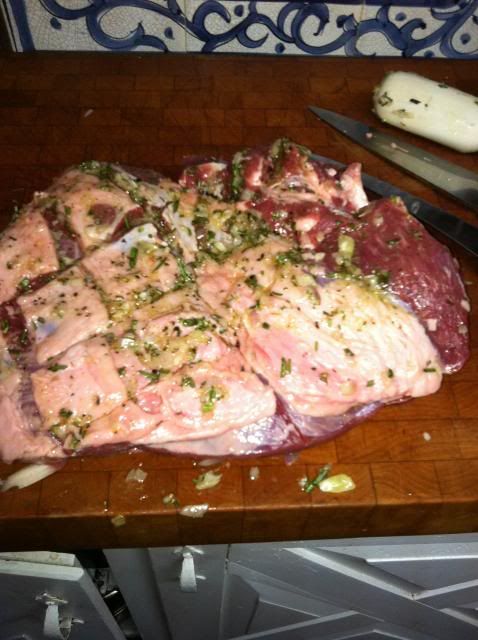I would like to preface this post with some explanation to my approach. I touch on history, personal family experiences and times as well detailed process with probably more explanation than needed but keep in mind this dish touches the soul, so I hope you enjoy what I have written and more importantly fall in love with this dish as much as I have.
As with any family, there are those special dishes that are steeped with childhood memories and stories of generations past forwarded down. For me, Finnan Haddie, a lightly smoked fillet loin of haddock, was one of those dishes, introduced by my father, stemming from his strong New England family roots, Gloucester and Charlestown, Massachusetts, dating back to the late 1600’s. The dish originated in Scotland, from the town of Findon, aka “Finnan”, and migrated to New England during colonial times, with its natural preservative benefits derived from brining and smoking, all typical processes along with salting meats and fish prior to the introduction of refrigeration.
This dish was a Christmas morning tradition, served in a wonderful cream sauce over toast points. My sister, brothers and mother weren’t huge fans, meaning there was more for Dad and I – a good thing -while the others suffered through country scrambled eggs and fresh ground sausage from Catina’s, http://www.hamptons.com/News-Business/The-Bottom-Line/2313/Catenas-Where-Family-Business-And-Memories-Mix.html , a meat market in Southampton, L.I. The sausage was formed into ‘Sargent’ size patties, accompanied with Thomas’ english muffins, buttered and popped under the broiler for that golden crispy goodness…The sausage was not to be believed. It was ground and seasoned with a little red pepper flake, likening it to more a southern style sausage with a bit of heat, made by a passionate meat cutter, from traditions of recipes handed down in the Catina family trade….I recall the smell from the saw dust on the floor, and have fond memories of a display counter that showcased crown roasts, rib roasts with fat cap’s tied on, racks of lamb, butterflied meats to order, spoon roasts, veal, pork and lamb chops, scaloppini, calves liver, and many more of the traditional cuts and selections that are becoming less known or available today… all of which would bring delight and a smile to anyone’s face who loved good food and, more importantly, loved to cook. Yesterday’s meat cutters were not only masters of their trade, they were also very adept at cooking all types of dishes utilizing methods that more often than not determined how they would ultimately cut and trim the meat for the customer…..if I could only click my heels…! Sorry to digress. Back to the Finnan Haddie..
The same story holds true for the older, more traditional fish markets that would carry the wonderful thick loin or ‘captains’ cuts of smoked haddock procured from their specialty purveyors. The best market that I frequented over the years is Bon Ton Fish Market http://www.bontonfishmarket.com/ a Greenwich, CT institution dating back to 1902, and one of Dad’s favorite haunts where he would get his smoked haddock. I would follow later in his footsteps even after we moved to Portland, Maine, having them cold pack and ship it fresh overnight. An expense, yes, but the result was well worth it… until the price started to exceed $14.00 a lb. I recently called Bon Ton out of interest to see what the availability was and they freely offered they now carry it only frozen and are no longer able to get the thick cuts. My jaw dropped when I asked the price, not having purchased from them in years, and was told $19.99 a lb.
The absolute best finnan haddie I have had at restaurants that were true to the dish, outside of my own, was when I had it served to me at Locke Ober’s of Boston http://www.lockeober.com/about_cp.htm or Sweets http://www.southstreetseaportmuseum.org/index1.aspx?BD=9149 , an historic restaurant dating back to the mid 1800’s until its close in early 1990’s, a seaport staple located in lower Manhattan’s Fulton fish market district. Finnan Haddie was a signature dish of both restaurants back in the day.
On and off over the past 10 years, I have ventured out of my comfort zone and tried various vendors substandard attempts at replicating the art of the delicate brine and smoke required for this dish. I would have given up if it weren’t for my love of smoking fish, emanating back to smoked blue fish pate, scallops and mussels when we lived in Maine. This is where I was first introduced to Duck Trap seafood products http://www.ducktrap.com/index.html out of Belfast, a tremendous smoke house and vendor well known today for various smoked varieties of fish, shell fish and pates.
In continuing my search for the traditional processes and recipe, it was clear the trick would be finding the right true method worthy of the dish’s heritage, remaining true to its roots.
I have spoken to many people, read many articles, and tried numerous brines and smokes. Finally, after about 5 years of inquiries and trials, I can honestly say I have found it… and yes, this Christmas, smiles donned the family faces once again…..….Ohhhh yeah, here’s to you Dad! I know he was smiling too!
Now to share -first the process:
Smoking involves two optional processes, a light to moderate heat smoke or, alternatively, a cold smoke method. For this recipe, I used a light heat smoke. I will however be addressing in a future post smoking methods and these processes in greater detail with illustrations and hot links as reference points.
The recipe calls for thick loin or captain cut of haddock. Cod can be substituted if haddock is unavailable. The fillets are first brined, then air dried, smoked and lightly poached, at a simmer. A cream sauce is made, optionally using part of the poaching liquid for its smokey richness, flaking large chunks of fish with a fork, and, finally, folding the fish into the cream sauce letting it steep a bit prior to plating it up. I have broken down the recipe into 5 phases, starting with the brine, then smoking, preparing the cream sauce, and plating.
RECIPE
5 -6 lb thick loin cuts of haddock or select Atlantic cod, skin on or off, based on personal preference. If skin on is preferred, remove after the fish has smoked and allowed to chill. Jimmy Turner of Turner Seafood in Gloucester, MA http://www.turners-seafood.com/History.html is my go to Seafood market for the freshest and best of cuts and seafood selection, as illustrated with the beautiful fillets of haddock……a slice of the old world where the passions of the family trade rich in tradition are still carried on today at Turners still available to us here in Gloucester,MA.
- Prepare the brine:
- 1 Gallon water
- 1 ½ cup Kosher salt
- ½ cup Light Brown sugar
- 3 Bay leaves
- 1 tsp Black peppercorns
Combine the water, salt, sugar, bay leaves and black peppercorns in a pot and bring to a boil, stirring until salt and sugar are dissolved. Let cool to room temperature, and transfer brine mixture to a non-reactive dish, glass or plastic bowl of your liking, making sure fillets are able to be completely immersed.
Place in refrigerator for 1.5 hours.
Remove filets from brine and place on lightly greased smoking rack.
Allow fillets to dry, forming a pellicle and tacky to the touch, roughly 2-4 hours. You’ll note, as illustrated I made a simple tiered smoking rack which works great and was simple to build, not to mention inexpensive, allowing for an upper level for smoking or bbq’g, maximizing the cooking surface on my Big Green Egg.
2. Smoking the Haddock
Prepare the Big Green Egg, making sure bowl/tray and all vents are clear of ash. For chips or chunks, the recipe calls for alder or cherry. Both are true to the traditional dish and provide a little latitude depending on preference and taste. I used alder and was impressed with the results more so than cherry.
I use the funnel starter with paper and BGE lump charcoal. If you are using your own barbi other than an Egg and are unfamiliar with lump hardwood, I would encourage you to try it with this dish, preserving natural flavors free of any distillates found in the more commonly used briquettes, a product I gave up using 10 years ago and never turned back. You won’t either!
Fill the funnel ¾, or equal amount, ignite and burn until well lit. Open bottom vent 1/3 and the center pin wheel to the open position. Take two good handfuls of chips or 3 to 4 chunks. I use the chips on short smokes as they tend to bring on a quicker, fuller smoke, getting going sooner. Place racks in and close……..
………being sure to monitor smoke and heat level, maintaining lower than 150 degrees if possible so you get a good long moist smoke without drying out the fillets. The bowl of the Egg is deep enough where the heat dissipates a bit especially when monitoring vents. On other grills, light small amount of charcoal, add chips on top, and cook indirectly, monitoring your temp. Estimated time depends on heat – anticipate anywhere from ½ to 1+/- hours, I know this sounds like I am a politician, but variables of filet thickness, heat, amount of smoke are all determining factors in the fish reaching a nice golden brown, as illustrated.
I recommend testing with your finger, looking for a little give similar to pressing the palm of your hand closer to the heel. The fillet should be draining a bit of fluid through its flakes, as seen in the illustrations. If edges are getting a darker brown, pull it. Remember, once the fillets are cooled, they are lightly poached, adding another step to the cooking process. So when in doubt, if they have a nice golden brown color, pull them.
3. Poaching the Haddock
Let fillets cool……
……remove skin if any, place in pot, and add milk to cover. Bring to simmer/light boil for 15 minutes, drain and set aside. When cooled, gently separate large pieces of fish with a fork, leaving nice chunk/bites. Be careful not to shred. Larger chunks provide nice texture and preserves the natural flake of the haddock.
4. Time for the Cream Sauce
Bechamel or White Sauce (makes 2 cups of sauce)
- 4 tbs butter
- 4 tbs flour
- 2 cups milk (can use poaching milk – if not too salty)
- 2 tsp Outerbridge’s Bermuda Sherry Peppers ( of special note: I can’t speak more highly about this condiment and their other products….. used for practically anything…. If you love to cook check out their site http://www.outerbridge.com/ my father helped to open up marketing and distribution of Outerbridges Sherry Peppers in the US back in the 70’s and worked very closely with its founder Yeaton Outerbridge who he was very fond of.)
- Salt & Pepper to taste (go light on the salt because of the brine & add to taste)
In a sauce pan or saucier melt butter & whisk in flour over medium heat, cooking the flour without browning. Add milk about ½ cup at time, making sure to allow the mixture to smooth out as it thickens, thoroughly cooking the flour, remember taste, taste, taste, if its flowery at all it will rob the final product of all its natural goodness.
Gently fold the sauce into the fish, being careful not to mash the fish. You don’t have to use all the sauce as you want it to cover lightly and not blanket the fish, hence favoring a lighter cream sauce. Cover and warm. Let everything meld a good 20 minutes or so allowing everything all flavors to reach their peak.
Save the tradition by trying this great dish and passing it on, its one of the best rich in heritage……
…cooking with passion and reaching out of the box….
Cheers!












